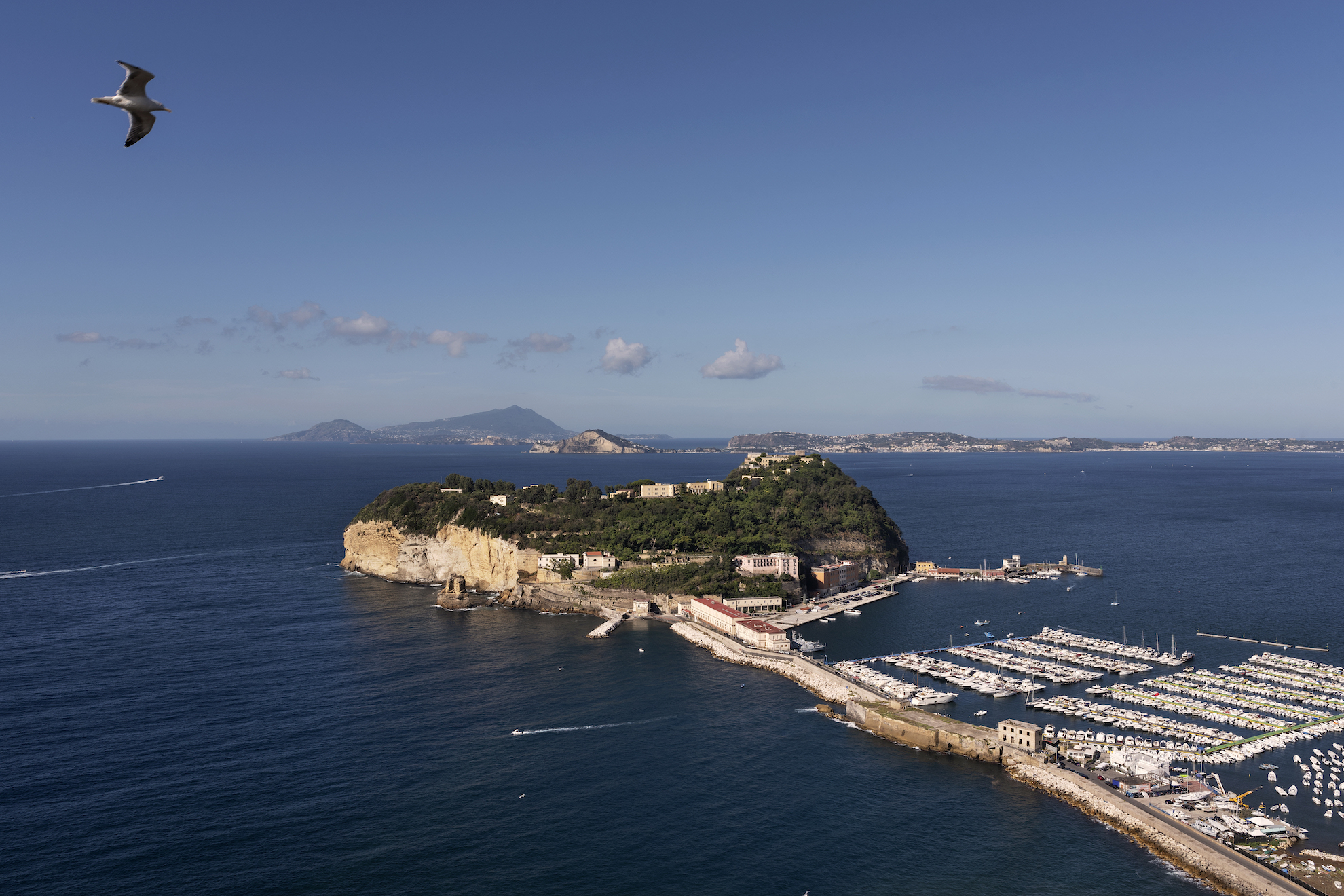Homer used to call the island Nesis, and says that the large inlet of Porto Paone offered protection to Ulysses before going to the Grotta di Polifemo, which the ancients positioned in the current Grotta di Seiano.
The Island seen from The Pausilypon Park | Ph. Anna Monaco - Trentaremi

In the Homeric tales Nesis was an island "with shady forests and inhabited by an infinite population of goats". In the Letters to Brutus, Cicero tells of his visit to Nisida, guest of Brutus. As a well-documented site dedicated to the Phlegrean Island tells, for some historians the conspiracy against Caesar was organised in the summer residence that Brutus had built on this small island of the Phlegrean archipelago.
Today Nisida lives apart from the rest of the city. It is an island, but it is connected to the mainland with a long concrete tongue that projects it towards Bagnoli, towards the former Italsider, a badly managed example of industrial archeology. When you look at it from above, from the terraces of the Virgilian Park, Nisida looks like an oasis of greenery and tranquility, a place of mystical beauty, where you can take refuge to find yourself, to live in contact with nature and in silence.
from the Parco Virgiliano | Ph. Anna Monaco - Trentaremi

It is no coincidence that historians narrate that Nisida also hosted one in the Middle Ages, when numerous monasteries were built along the Campania coast that had an important cultural function in the country. And from there, an abbot named Adriano left for Great Britain to carry out evangelism.
Many intellectuals have praised the beauty of Nisida. In Roman times, Statius, Pliny, who told of his asparagus, Seneca, Cicero. In the works of the Neapolitan period Boccaccio refers to Nisida as an island full of rabbits. Pontano and Sannazaro described it as a nymph born of the sea. For Cervantes, Nisida was a beautiful woman who had made two Neapolitan boys fall in love with her.
The sun sets behind Nisida | Ph. Machi di Pace - Trentaremi

Today Nisida hosts the Juvenile Penitentiary Institute, which makes it practically inaccessible as a highly protected and controlled place. In the 19th century, awareness was gained that to guarantee a better quality of life it was necessary to ensure the recovery of prisoners. Thus the watch tower of Nisida, with its circular shape, was transformed into a prison. The tower enjoyed a privileged position: it was at the top, overlooking the sea, in a magnificent place from which it was difficult to escape, but at the same time it was close to the city.
«Nobody knows that Nisida is an Island»Edoardo Bennato (singer) - “Nisida”
That structure, which Benedetto Croce had the opportunity to visit and narrate in an article entitled “Noblest Naples”, published in the Mattino, had illustrious prisoners in the Bourbon era such as Carlo Poerio and Michele Pironti, and it was transformed into a correction centre for minors.
Today Nisida is connected to the city, but the island retains its solitary and nostalgic character.

